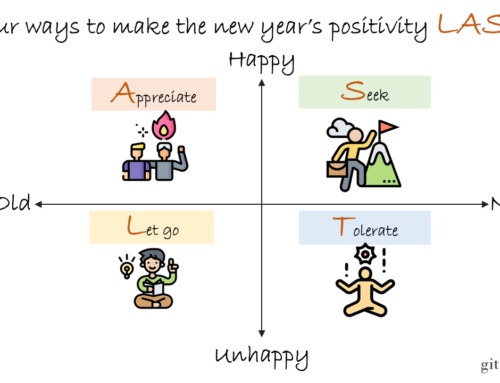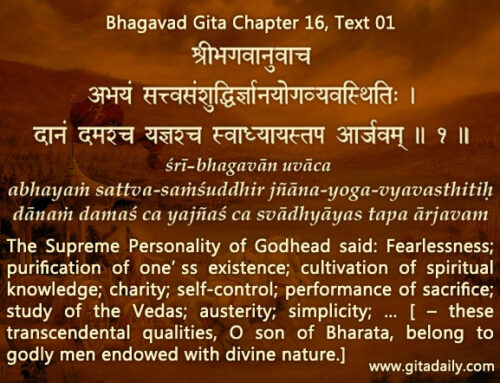The Bhagavad-gita is centered on the ethical and metaphysical conversation between Krishna and Arjuna. Textually, it is presented as a part of a much larger discussion between the blind king, Dhritarashtra, and his assistant, Sanjaya, who described to the king the incidents on the battlefield at Kurukshetra. This narrative framing places the Gita in its historical context, conveying how its wisdom was spoken to address a real-world crisis and is thus meant to be philosophy made practical.
Within the Gita’s 700 verses, Krishna speaks 574 verses, Arjuna 84 verses, Sanjaya 41 and Dhritarashtra 1. These 700 verses are divided into 18 chapters, with the first chapter containing most of the verses spoken by characters other than Krishna. After this chapter describes the battlefield situation and Arjuna’s conflicted disposition, Krishna addresses Arjuna’s concerns over the next 17 chapters. These chapters are of variable lengths, with the shortest chapter being 20 verses and the longest being 78 verses. The length of the chapters is independent of their significance. The two longest chapters — chapter 18 with 78 verses and chapter 2 with 72 verses — are often considered to be among the Gita’s most important chapters; they are sometimes considered to be the starting summary and the concluding summary. Simultaneously, the two shortest chapters — chapters 12 and 15, both featuring 20 verses — are considered highly important, both for their content and for their value as sections of the Gita to be recited for sacred purposes.
The Gita is essentially an answer to Arjuna’s key concern (2.7): what is dharma, the right thing to do? While hearing and contemplating Krishna’s answers, Arjuna raises sixteen other questions throughout the Gita: 2.54, 3.1-2, 3.36, 4.4, 5.1, 6.33-34, 6.37-39, 8.1-2, 10.12-19, 11.1-4, 11.31,12.1,13.1,14.21,17.1,18.1. When these seventeen questions are complemented with Dhritarashtra’s starting question (1.1), the Gita features eighteen questions, which mirrors the book’s eighteen chapters, thus revealing the artistic symmetry of the poetic text. This symmetry is seen to be further significant in the light of the epic of which the Gita is a part: the Mahabharata is composed of eighteen book-length sections (parvas), and its climactic war extended to eighteen days.



Hk, PAMHO